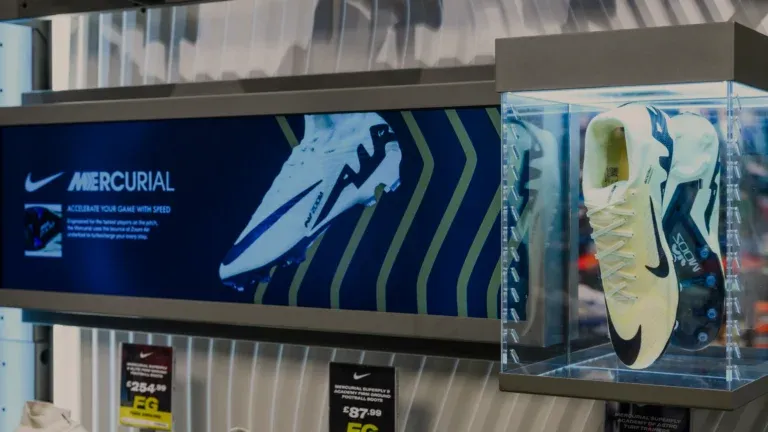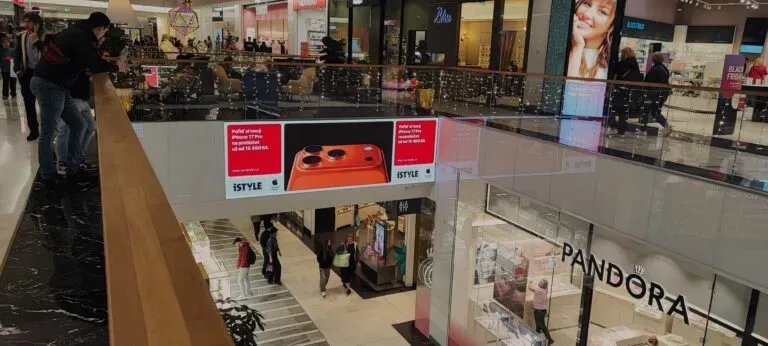Digital Signage technologies in the subway for passengers
In the modern world, technology encompasses all aspects of our lives, including public transportation.
In megacities, where the subway plays a crucial role in the daily commutes of millions of people, screens and displays become not only advertising and informational but also a tool for orientation during transit. Digital signage installed in the subway has become an integral part of passenger service, aiding in navigation through complex station networks and providing information about travel and surrounding services while broadcasting advertising content.
Digital signage and displays, installed at subway stations, display a wide range of information: from train schedules to route planning and even digital advertising. By using digital signage software and digital signage players, subway operators can effectively manage the content displayed on screens, ensuring up-to-date and clear information for passengers.
Monitors in subway passageways: The new reality of the information environment
Video screens in the subway are not just a means of advertising but also a tool that helps passengers receive useful information and navigate complex station systems. Digital signage, located in subway passageways, offers a wide range of services: from showing train schedules to playing digital advertising.
The installation of digital structures in underground passageways becomes a strategic choice for advertisers and subway operators. They are aimed at the active flow of people in the passageways, providing a large number of contact points with the audience.
One of the important features of digital advertising in the subway is its contextual approach. Advertising clips alternate with useful information, such as news, weather forecasts, event announcements. This maintains passengers’ interest in the content being played and ensures the effectiveness of the advertising campaign.
Thanks to built-in digital signage players, screens in subway passageways become more interactive. They not only play advertising videos but also offer access to the Internet, interactive reference services, and navigation systems. This makes them more useful and convenient for passengers.
In large cities, the use of digital signage in the subway becomes not only a means of advertising but also an important factor influencing the informational and social spheres. They provide effective communication between city services, businesses, and residents, making the process of moving around the city more convenient and safe.
In addition to informational and advertising functions, digital signage in the subway can be used for other purposes. For example, they can be used for conducting various surveys among passengers or for publishing important messages in case of emergencies. Thanks to digital signage software and a centralized video management system, such messages can be distributed extremely quickly and effectively, making the subway safer for passengers.
Additionally, digital menu boards can become an integral part of a comfortable service for passengers. They can display information about the location of restaurants, cafes, and other establishments within metro stations, as well as their menus and prices. This will allow passengers to conveniently choose a place for a snack or dinner, and also help maintain the popularity of local businesses.
Thus, digital signage and screens in the metro can not only provide information about travel and advertise goods and services, but also perform a wide range of other functions, contributing to convenience, safety, and comfort for passengers.
One of the key components of digital signage is the display software, which is responsible for content management. This can be a Content Management System (CMS) or a Centralized Video Management System, which allows metro operators to easily manage content on screens from anywhere, monitoring the relevance of information and responding promptly to changes in schedules or events.
Digital signage players ensure the playback of content on displays, providing high-quality and uninterrupted playback of video, images, and other multimedia content. This allows for the creation of attractive and informative screens for passengers, facilitating their convenient and comfortable journey.
All this makes screens and displays in the metro not only a source of information but also an integral part of the passenger service, facilitating a convenient and efficient journey for citizens in large cities. Thanks to the use of modern management and content display technologies, the metro can offer passengers not just information, but also the experience of a modern and innovative environment.
Furthermore, the use of digital signage and screens in the metro can become a tool for increasing public awareness about important social issues and problems. By showing short video clips or graphic materials, the metro can draw passengers’ attention to current topics such as ecology, road safety, the importance of social support, and many others. This can become not just a source of information but also a channel for communication and mobilization of the public to participate in various initiatives and joint projects.
Screens in the metro can be used for cultural and educational purposes, promoting art and cultural heritage. Displaying multimedia materials about prominent artists, the history of the city, or various art projects can enrich passengers’ travel experience, making it more fulfilling and interesting.
Managing digital signage and the content on them requires an effective system that will ensure a smooth and organized process. This is where digital signage software comes in handy, making it possible to manage content on the signs from a centralized point.
CMS (Content Management System) is an essential component of such a system. It allows metro operators to efficiently update content, distribute it across different stations and screens, and monitor its relevance. Thanks to this, the information displayed on the signs is always fresh and relevant to passengers.
Digital signage players also play an important role in content playback. They provide high-quality display capabilities and the ability to play various video and image formats. This is crucial for ensuring the quality playback of digital advertising materials and other content for passengers.
Digital signage software may also include analytics systems that allow collecting data on the effectiveness of digital advertising campaigns, the attendance of certain stations, and other useful metrics. This helps optimize advertising strategies and increase their effectiveness.
Overall, digital signage in the metro becomes not just a source of information and digital advertising but also a tool for the convenience and comfort of passengers, and digital signage software plays a key role in ensuring effective and organized control of these signs.
Advision is a Content Management System for remote management and media planning of broadcast video and audio content. We help offline businesses and advertising companies automate workflows and implement a robust Digital Signage infrastructure using our own software and hardware solutions.
Contact us, and we will help you implement the most modern technologies to solve your problems!




















